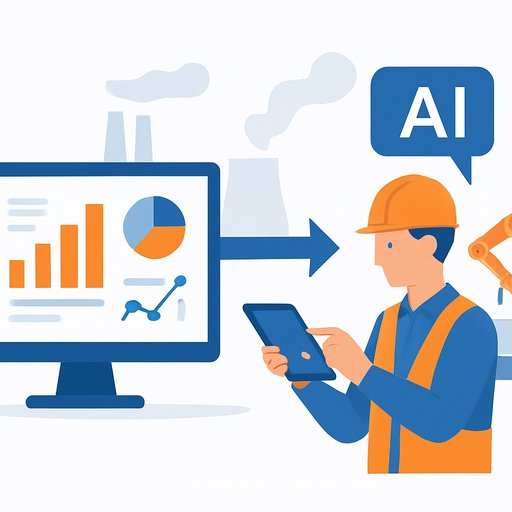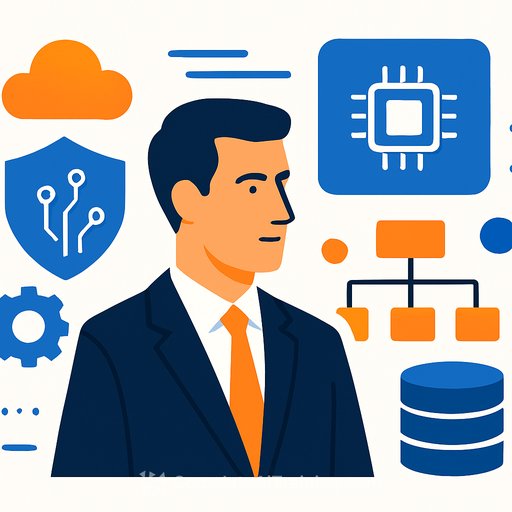Working smarter in nuclear: How Nuclearn uses AI to optimise operations
The nuclear industry is carrying a quiet tax: paperwork. Operations teams spend hours on documentation, procedural updates, and compliance checks that keep plants safe but soak up engineering bandwidth. Nuclearn was built to give that time back.
Co-founded by CEO Brad Fox and CFO Jerrold Vincent, the company delivers private, secure AI that speeds documentation, strengthens compliance, and increases engineering capacity. The platform is already running across more than 50 facilities in the US, Canada, and the UK.
The bottleneck operations leaders feel every day
Fox puts it bluntly: "The bloat is in documentation, compliance, procedure writing and administrative burden." Many plants now run 700-800 staff per reactor, far above early expectations. The issue isn't operations quality; it's the flood of manual, repetitive tasks baked into highly regulated work.
Vincent adds: "Most of what slowed us down wasn't technical. It was pattern-matching and compliance logic." That's exactly where AI can help without touching the control room.
What the platform does
Nuclearn connects natural language processing with plant-specific data, processes, and security models. It's available on-premise or as a secure hosted system. Every environment is isolated, permission-based, and fully auditable.
- Write and validate procedures with source-backed citations
- Automate CAP screening and repetitive risk assessments
- Classify work as capital vs expense, consistently and at scale
- Search licensing, QA, and historical archives with document-based reasoning
- Assist outage preparation and maintenance planning
- Analyse and trend safety observations with traceable outputs
Why it fits nuclear operations
- Context over guesswork: The system searches verified documents in your environment and surfaces excerpts, reducing the chance of AI "hallucinations."
- Human-centered workflows: The expert stays in control - review, edit, and approve before anything leaves your desk.
- Compliance-first: Permissions, audit trails, and data isolation are built in from the start.
As Vincent says: "In nuclear power, the operator is the hero. The engineer is the expert. Our platform exists to support them."
Marketplace: stop solving the same problem 100 different ways
Every plant has clever workarounds. The challenge is sharing them safely. Nuclearn is building a secure marketplace where utilities can share or adopt pre-trained models, prompts, and apps - while protecting IP and data privacy. As more teams use similar tools, best practices get baked in and quality improves for everyone.
International from day one
Most deployments started in the US, but adoption in Canada and the UK is growing quickly. Even when a site's requirements differ, teams can load their own regulatory guides, site manuals, and licensing histories so the AI references the right sources from day one. Work is underway to expand the core model with country-specific standards like the UK's Office for Nuclear Regulation and Canada's Canadian Nuclear Safety Commission.
Measured outcomes operations leaders care about
- Procedure prep time cut by about 50% using the AI assistant
- More accurate capital vs expense coding with a clear impact on the income statement
- Safety analysts move from hours of manual compilation to dashboards in minutes
- Maintenance planners streamline outage scope planning and documentation handoffs
Results like these build trust. Faster turnarounds, fewer documentation errors, and higher confidence in compliance are what win over busy teams.
Addressing risk without hand-waving
High-consequence environments demand proof, not promises. Nuclearn's approach keeps humans in the loop, keeps data private, and keeps every output traceable back to the exact citation and revision. That transparency is what moves AI from "interesting" to useful in nuclear.
What to do next if you run operations
- Start with document-heavy workflows: procedures, CAP screening, licensing research.
- Pick a deployment model early (on-prem vs hosted) and map permissions by role.
- Set review gates so AI outputs always get expert sign-off.
- Pilot, measure time saved, track defect rates, then expand to outage prep and maintenance planning.
- Evaluate the marketplace to avoid rebuilding tools your peers already solved.
- Raise baseline AI literacy across engineering and operations.
If you're building AI capability across ops roles, this resource can help: AI courses by job function.
The next five years
AI won't run plants. It will free the people who do. Expect it to sit inside safety analysis, licence renewals, outage coordination, and vendor audits - multiplying expert time as workforce turnover accelerates.
As Fox puts it, scaling nuclear also means scaling the human element. That happens with smarter processes, tighter workflows, and tools that give skilled people their day back. Done right, AI earns its place on the ops desk the same way anything else does: by making the work better, faster, and safer to document.
Your membership also unlocks:






